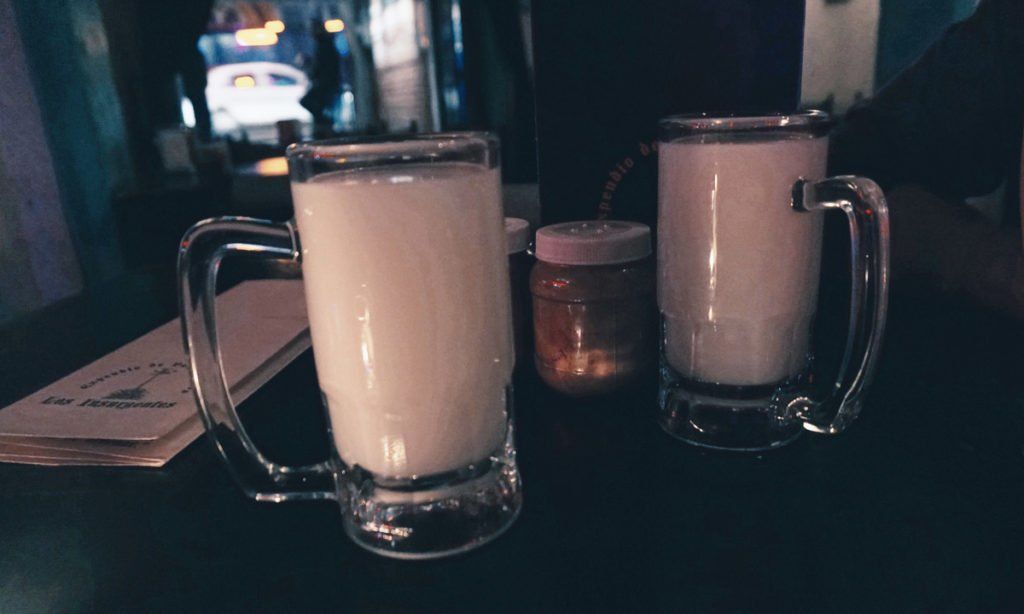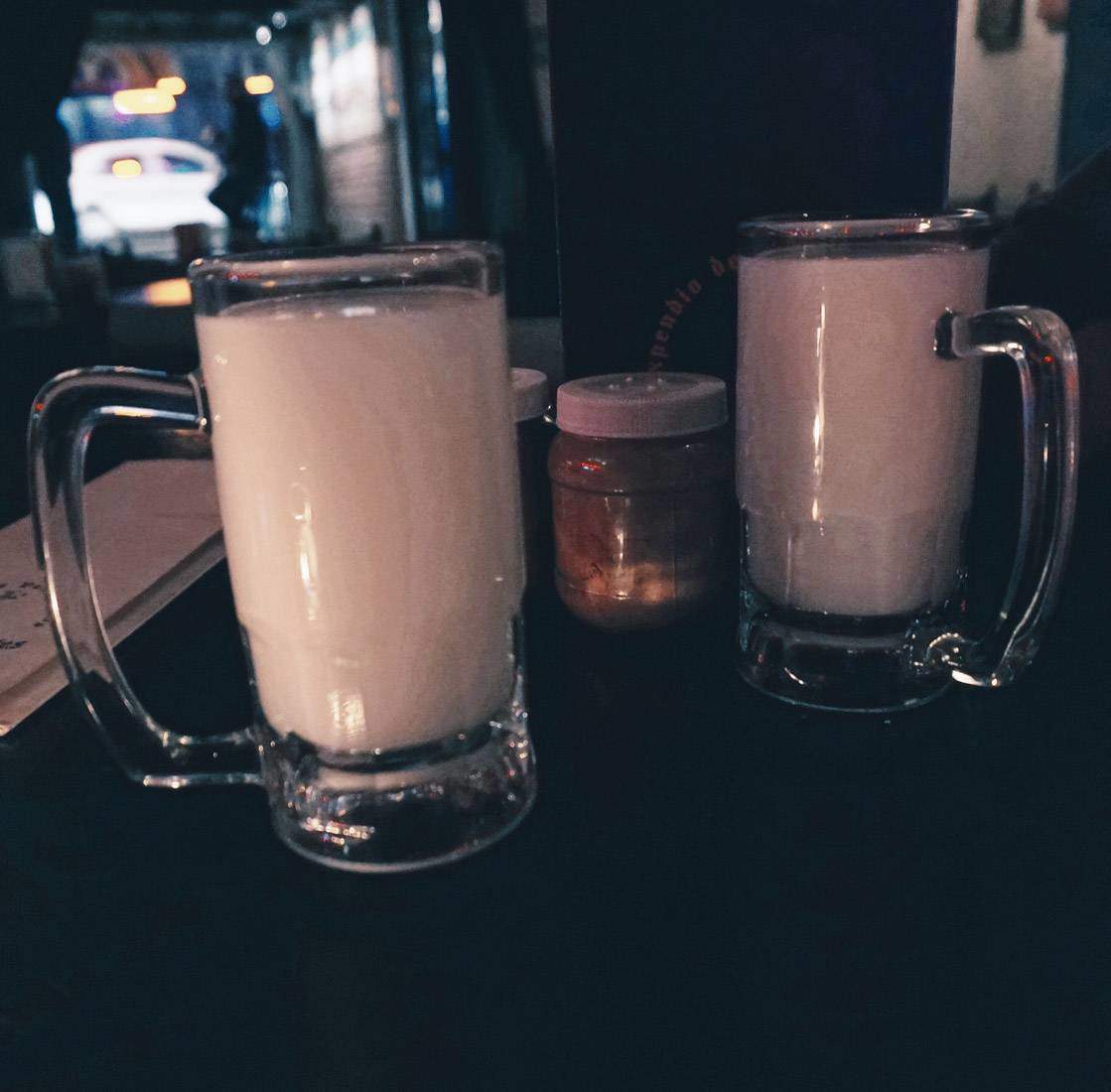A couple millennia ago in the ancient Aztec culture based in what is present-day Mexico, there was no beer or wine. Instead, for religious rituals and leisure time alike, the Aztecs produced a beverage called pulque, made by fermenting the nectar of the native agave plant. Amazingly, the drink survived the Spanish conquest in the 16th century and remained a popular working man’s drink in Mexico well into the 20th century, when it began to fall out of favor. Recently, pulque has become easier for a tourist to find, as it gains new life in the city’s hipster culture. “Pulquerias” are the bars that specialize in the ancient drink, and while they’re not quite ubiquitous, you’ll find one without trouble if you look. On a recent trip to Mexico City, I made it a priority to head to one and try pulque.
To experience pulque requires that one actually head to Mexico—it’s not available in the U.S., much less anywhere further afield—which makes it a different thing altogether from those other Mexican agave-based spirits, tequila and mezcal.
We are all familiar with tequila’s popularity. And there’s been a lot of ink spilled recently about the craze for mezcal currently sweeping America, and although on a certain level it’s probably legitimate, I come to the last word of each related article more convinced that whoever is producing said mescal hired a really great publicity firm and that’s the only real truth about the spirit that the New Yorker recently called, “…at its heart, homemade hooch.” The most important thing to remember when reading about the sudden regard for mezcal is that tequila is a type of it.
Pulque, on the other hand, remains one of those increasingly rare cultural objects that hasn’t been exported, marketed around the globe, acquired by an enormous corporate entity. (It’s not completely for lack of effort. Pulque is highly perishable, which makes export difficult. There is one brand that produces a canned version, but the consensus holds that it’s not quite the same. It’s also really, really hard to find.)



At the suggestion of our hotel’s concierge, my boyfriend and I landed at Pulqueria Insurgentes in La Roma neighborhood. The concierge had advised us that some pulquerias lie on the outskirts of the city and can be dangerous. How true that is I don’t know; La Roma is Mexico City’s “it” area, where all the hippest things are currently happening. The pulqueria itself was borderline dive-y, but deliberately so. It didn’t seem like the kind of place that would have a bouncer out front, much less one who’d subject you to a pat down before allowing you in, but there it was. We grabbed a table and succeeded in speaking mostly Spanish in our exchange with the waitress. The crowd seemed like a solid mix of locals and English speakers.
Pulque often gets compared to beer not because it tastes remotely like it but because it has a similar alcohol content and is served in the same glass mugs. Its taste is in fact hard to describe, thanks to it’s being so unrelated to anything else I’ve ever tasted. If you order a pure one, it’s white, sort of milky looking but more cloudy than that, like someone just dissolved a pill in a glass of seltzer. Pulquerias also serve flavored versions which some people find more palatable. We ordered two plain mugs and, once they’d been set in front of us, regarded them with a variation on distrust. I took a sip first and immediately recorded the reaction in a note on my phone: Yeasty. Sort of like cider. Aftertaste-y. With a few months between that initial reaction and now, the cider association seems the least accurate in retrospect. It was certainly yeasty, and sort of resembled the runoff from the making of something else, yogurt or something like yogurt. It’s really not unlike kombucha. My boyfriend didn’t love it, and soon switched to beer. I wasn’t into the flavored pulques. As for the pure version, I wasn’t sure if I liked it or not, but then I kept sipping it and then I did like it, definitively. Just like when I first tried kombucha.







